Results of various tests showed irradiated chitosan delayed microbial growth in commercial shrimp and fish species
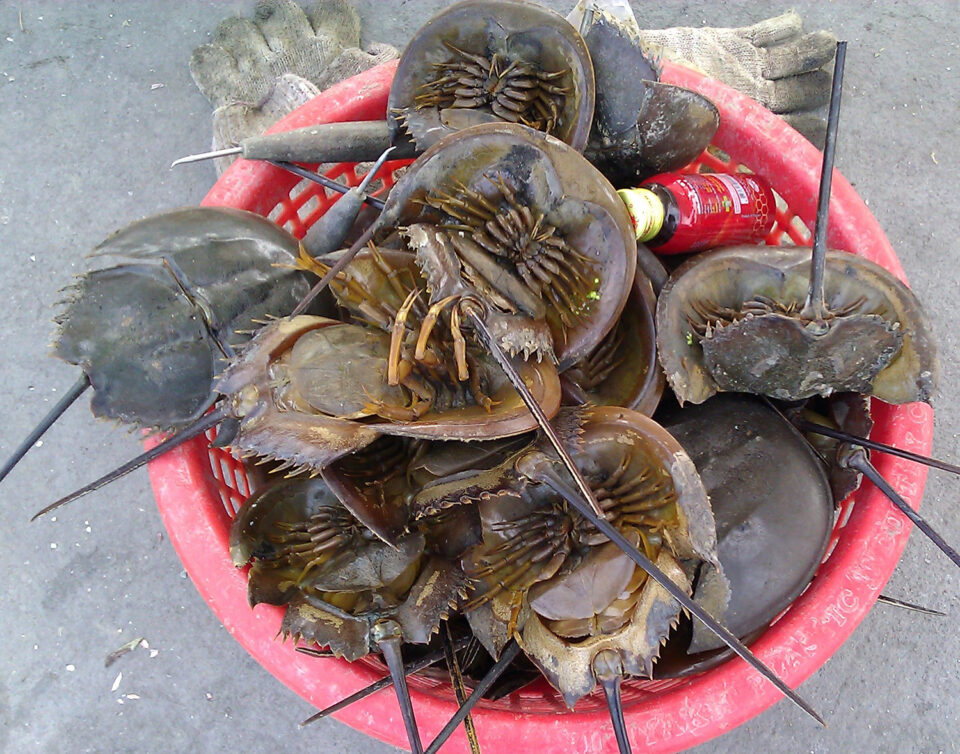
Rapid spoilage of food is mainly due to the high moisture and the decomposition of unsaturated fatty acids and free amino acids. In fact, unsaturated fatty acids are chemically unstable and easily oxidized. In the presence of oxygen and temperatures above 4 degrees-C, aerobic microorganisms are provided with optimum metabolic conditions to reproduce. Therefore, additives that can limit microbial growth are used to delay the decomposition process and thus extend the shelf life of food. At present, industries involved with seafood products rely on freezing, salting, chemical treatments and nitrogen or vacuum packaging for long-term storage of their products.
Freezing (cold storage) will delay microbial growth because it suppresses their enzymatic activities. But freezing alone causes surface dehydration, protein denaturation and lipid oxidation which negatively impacts flavor, odour, color and texture of the stored foods. The shelf life of frozen seafoods can be extended with synthetic and artificial additives, but these chemicals may cause allergies, health complications or require a secondary natural compound to become edible and safe. In their search for other compounds that can function as both food additives and for its preservation, scientists determined that chitosan [a sugar compound from the hard outer shells of shellfish and other organisms] from crustaceans, insects and other organisms has antimicrobial properties, and is biodegradable and biocompatible with various foods.
The antimicrobial properties of naturally sourced chitosan are selective, depending on its molecular weight, storage temperature and the pH of the coated food. For instance, shrimp chitosan with higher molecular weight reportedly has weaker antimicrobial capabilities than the lower molecular weight chitosan from horseshoe crab chitosan in comparative assays on food oxidation. Heat irradiation is a promising method to reduce the molecular weight of chitosan and improve its ability to extend the preservation of frozen seafood flesh. Chitosan from the mangrove horseshoe crab (Carcinoscorpius rotundicauda) has the lowest molecular weight of marine sources reviewed.
This article – adapted and summarized from the original publication [Pati, S. et al. 2021. γ-Irradiated Chitosan from Carcinoscorpius rotundicauda (Latreille, 1802) Improves the Shelf Life of Refrigerated Aquatic Products. Front. Mar. Sci. 8:664961] – evaluated the use of heat radiation [via gamma (γ) irradiation] to enhance the antimicrobial capability of the derived chitosan and its effect on shelf-life extension for three species with high commercial value throughout Asia: the banana prawn or shrimp (Penaeus merguiensis), the pomfret (Pampus argenteus) and hilsa (Tenualosa ilisha).
Study setup
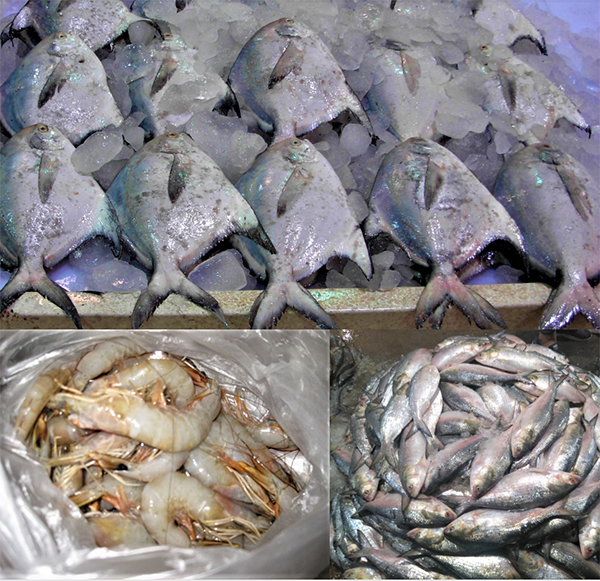
We procured banana prawns (1,600 animals, each ~ 30 grams, 33 to 38 cm long), pomfrets (218 fish, each ~ 650 grams, 30 to 35 cm long) and hilsa (152 fish, each ~800 grams, 30 to 39 cm long); these species were selected due to their high market and nutritional values. All samples were randomly selected and purchased from three certified (ISO 9001, HACCP, others) vendors from a fish market Naya Bazar in Balasore (Odisha, India). All animals were purchased alive, brought to the laboratory sacrificed by placing them in chilled (4 degrees-C) water to avoid rigor mortis. Samples of flesh were collected and properly processed.
Chitosan was prepared from the waste carapace of mangrove horseshoe crabs based on some of our previous studies. Irradiation of chitosan was performed using cobalt (Co-60) source at doses of 10 and 50 kilo-Gray (kGy) units [radiation dose in the International System of Units, defined as the absorption of one joule of radiation energy per kilogram of matter]. Chitosan solutions were prepared by taking an amount of horseshoe crab chitosan and dissolving it in 2 percent acetic acid.
Five, 100-gram batches of shrimp and fish samples were used in the experiment. Batch A was used as the control and consisted of untreated seafood samples (no preservatives). Batch B were samples treated with 2 percent glacial acetic acid as a chemical preservative method. Batches C, D, and E were treated with different types of 2 percent chitosan solutions (0, 10, and 20 kGy irradiation). These treated samples were dipped in their respective chitosan solutions for 1 hour, dried and packaged, and used in various tests.
The latter included examining the shrimp and fish samples for pH, thiobarbituric acid (TBA) reactive substance [TBARS; a common test to measure lipid oxidation products in cells, tissues, and body fluids], total viable counts [TVC; a quantitative estimate of the concentration of microorganisms such as bacteria, yeast or mold spores in a sample], and sensory evaluation [use of human senses to evaluate consumer products] changes while under 15-day refrigeration at 4 degrees-C.
For detailed information on the experimental design; chitosan preparation and irradiation; various spectroscopic analyses; shelf, pH and other analyses; sensory evaluation and statistical analyses, refer to the original publication.
Results and discussion
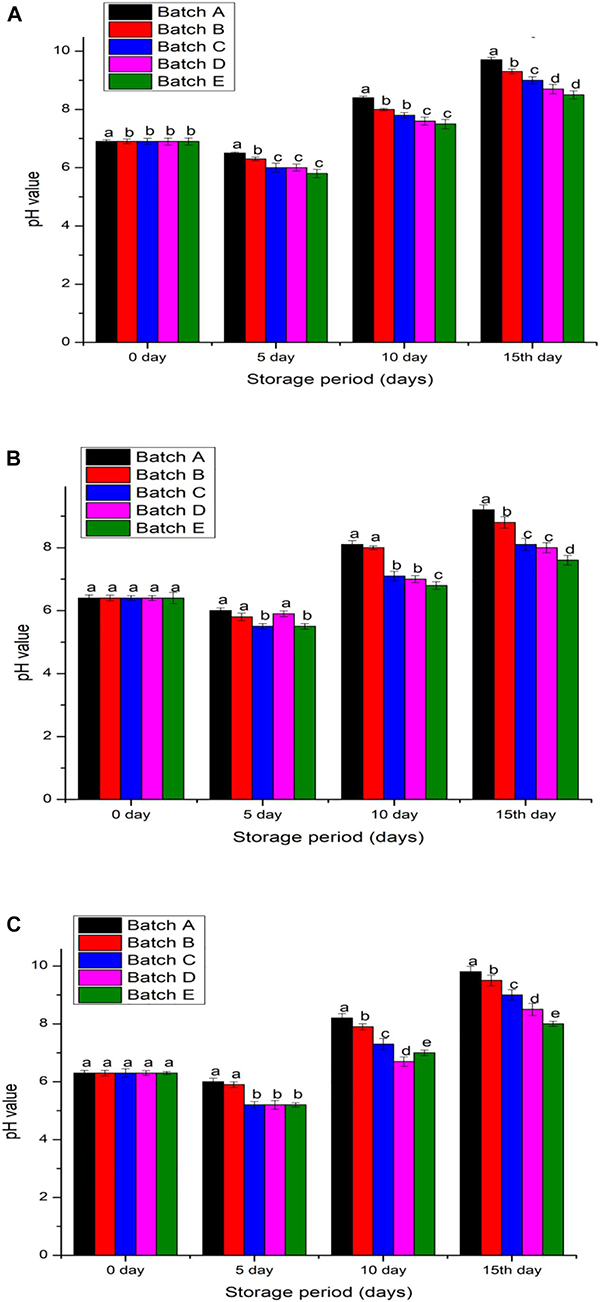
The exposure conditions for chitosan were essential for its chemical stability, particularly to control any underlying microbial enzymatic activities. With the varying pH of 0.1–0.5 in refrigerated conditions, hilsa fish flesh appeared to be slightly acidic with a pH of 6.3 ± 0.9, the lowest compared to pomfret (pH ∼6.3) and shrimp flesh (pH ∼6.9). Within 15 days after the 20 kGy irradiated chitosan coating, the pH of shrimp flesh increased by 23.18 percent, by 18.75 in pomfret, and by 26.98 percent in hilsa fish. Comparatively, without chitosan treatment (control), the pH of shrimp flesh increased by 40.58 percent, by 43.75 percent in pomfret, and by 55.56 percent in hilsa fish.
The oxidation of some fatty acids produces malonaldehyde [a marker for oxidative stress], and this compound negatively impacts the color, flavor and odor of foods when these are stored for long periods. The detection of high TBA beyond 2 mg malonaldehyde/kg in fish flesh reflects the effects of spoilage. In our study, all flesh products without the chitosan coating and with acetic acid coating registered more than 2 mg/kg TBA on day 0, while for samples with the gamma-irradiated chitosan coating, shrimp flesh contained 0.6 ± 0.03 mg/kg TBA, pomfret contained 0.26 ± 0.01 mg/kg TBA and hilsa fish contained 0.31 ± 0.01 mg/kg TBA.
After 15 days, the control groups (acetic acid preservation and without any treatment) recorded more than 2 mg/kg TBA in the flesh. Meanwhile, samples coated with 20 kGy chitosan had lower (0.38 mg/kg) TBA readings than the flesh samples coated with 10 kGy chitosan (1.02 mg/kg TBA) after 15 days of refrigeration. This analysis indicated that partial dehydration from the 15-day refrigeration period allows some fatty acids to oxidize in the flesh samples, but the selection of appropriate preserving agents such as natural (irradiated chitosan) against chemical (acetic acid) is crucial to increase the shelf-life quality of the refrigerated flesh samples. Our findings show that cold storage alone as depicted with the control group (without chitosan coating) is proven ineffective to reduce lipid oxidation and therefore, reduces the quality of flesh when stored for long durations.
The sensory quality of food products is based on texture, odor, gloss and appeal (non-stale) to achieve customer satisfaction. During refrigeration, the non-treated and acetic acid-treated flesh changed their color from gray to gray-white with an odor score that immediately reduced and ranged 4.71 to 4.92 in five days before greatly reducing to <1.0 in 15 days. It was different for hilsa fish, shrimp and pomfret that received the chitosan coat because after five days, their odor scores were 6.39 to 6.63 and the score only reduced to 5.04 (for 20 kGy irradiated chitosan) and 4.83 (for 10 kGy irradiated chitosan) within 15 days of refrigeration. It is understood that refrigeration alone is ineffective after five days because microbial action to decay the flesh will produce a putrid odor. However, adding a preservative such as (non- or irradiated) chitosan is sufficiently promising to delay the decay of flesh and this maintains their odor score above five, which is the baseline score for safe-to-consume shrimp and fish.
Perspectives
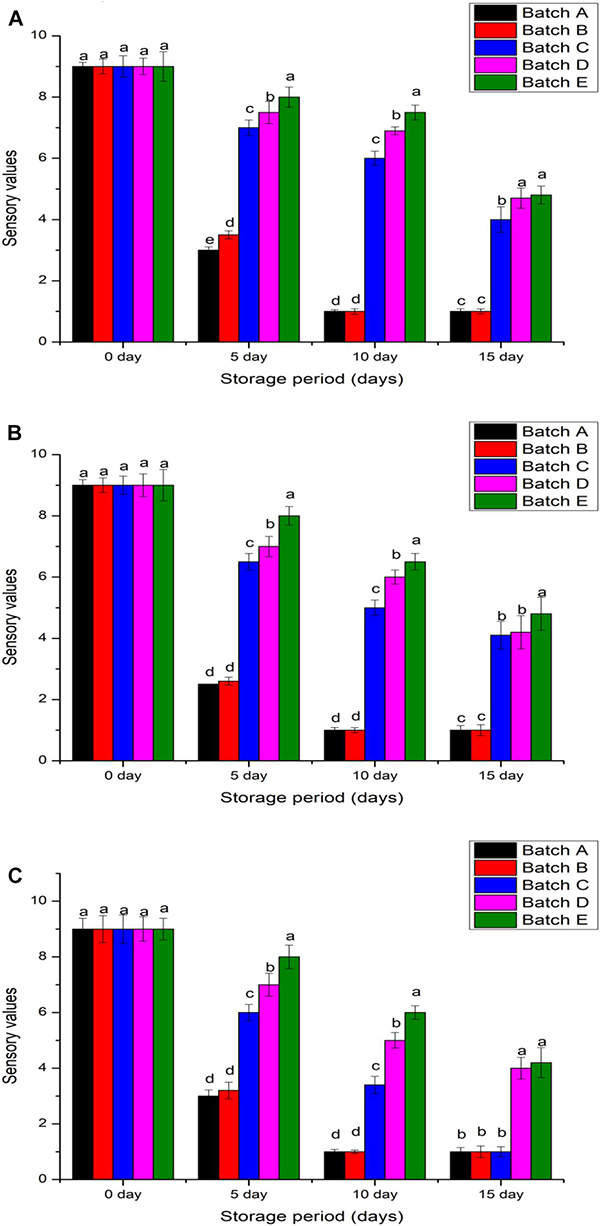
This study evaluated the effects of gamma-irradiated horseshoe crab chitosan on the shelf life of fish and shrimp based on microbial activity, pH, thiobarbituric acid and sensory qualities. Overall, high dose (20 kGy) irradiation developed a more effective chitosan polymer for preserving frozen seafood products to successfully extend their shelf life beyond the capabilities of refrigeration. Our results indicate that horseshoe crab chitosan benefits the post-harvest industry during long-term transportation of raw seafood products because coating these with the irradiated version of this chitosan polymer can maintain the freshness and prolong the food shelf life for at least 15 days.
Now that you've reached the end of the article ...
… please consider supporting GSA’s mission to advance responsible seafood practices through education, advocacy and third-party assurances. The Advocate aims to document the evolution of responsible seafood practices and share the expansive knowledge of our vast network of contributors.
By becoming a Global Seafood Alliance member, you’re ensuring that all of the pre-competitive work we do through member benefits, resources and events can continue. Individual membership costs just $50 a year.
Not a GSA member? Join us.
Author
-
Dr. Siddhartha Pati
Corresponding author
Department of Bioscience & Biotechnology, Fakir Mohan University, Balasore, India; and
Centre of Excellence, Khallikote University, Berhampur, India; and
Research Divisions, Association for Biodiversity Conservation and Research, Balasore, India
Editor’s note: The original article has nine co-authors.
Tagged With
Related Posts
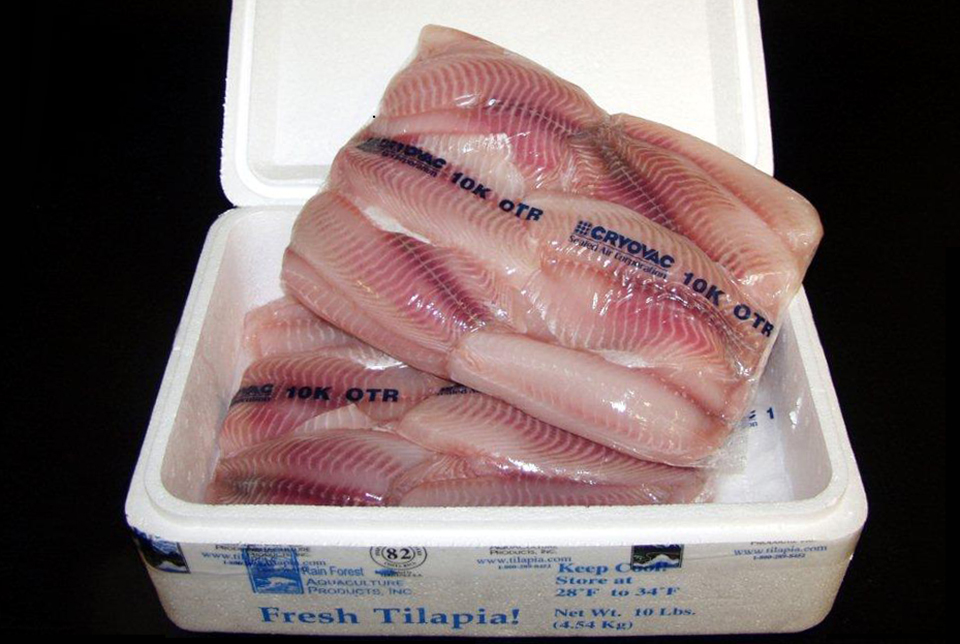
Intelligence
An examination of seafood packaging
Some substances can migrate from plastics and other seafood packaging materials into the product. Even if the substances are not harmful, they can affect the flavor and acceptability of the food.
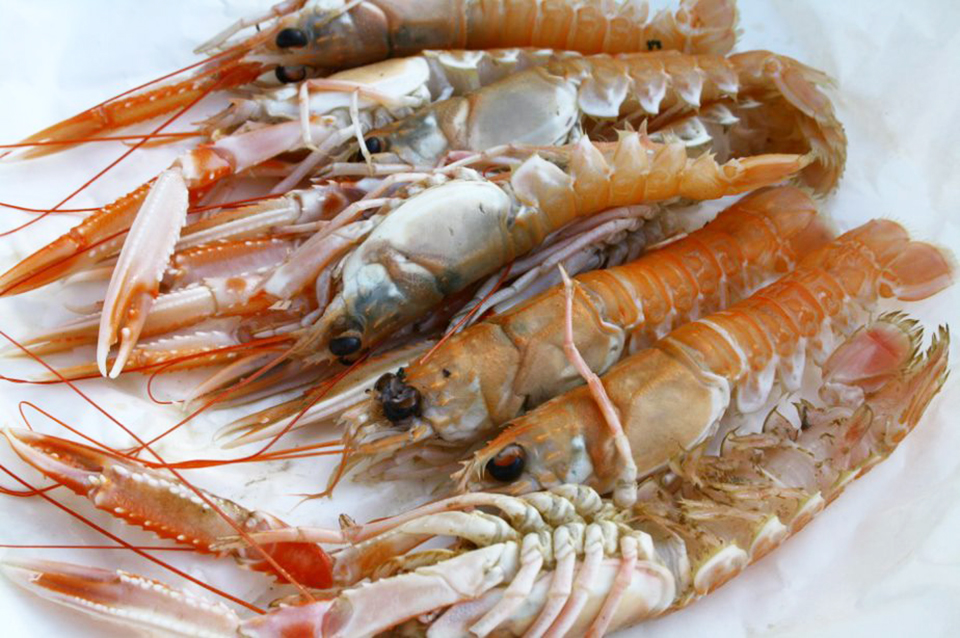
Innovation & Investment
Plastic 2.Ocean: Seafood packaging, made from shellfish
A new type of chitosan-based bioplastic, made from shellfish shells, emerges as a potential solution for global food waste and marine plastic pollution.
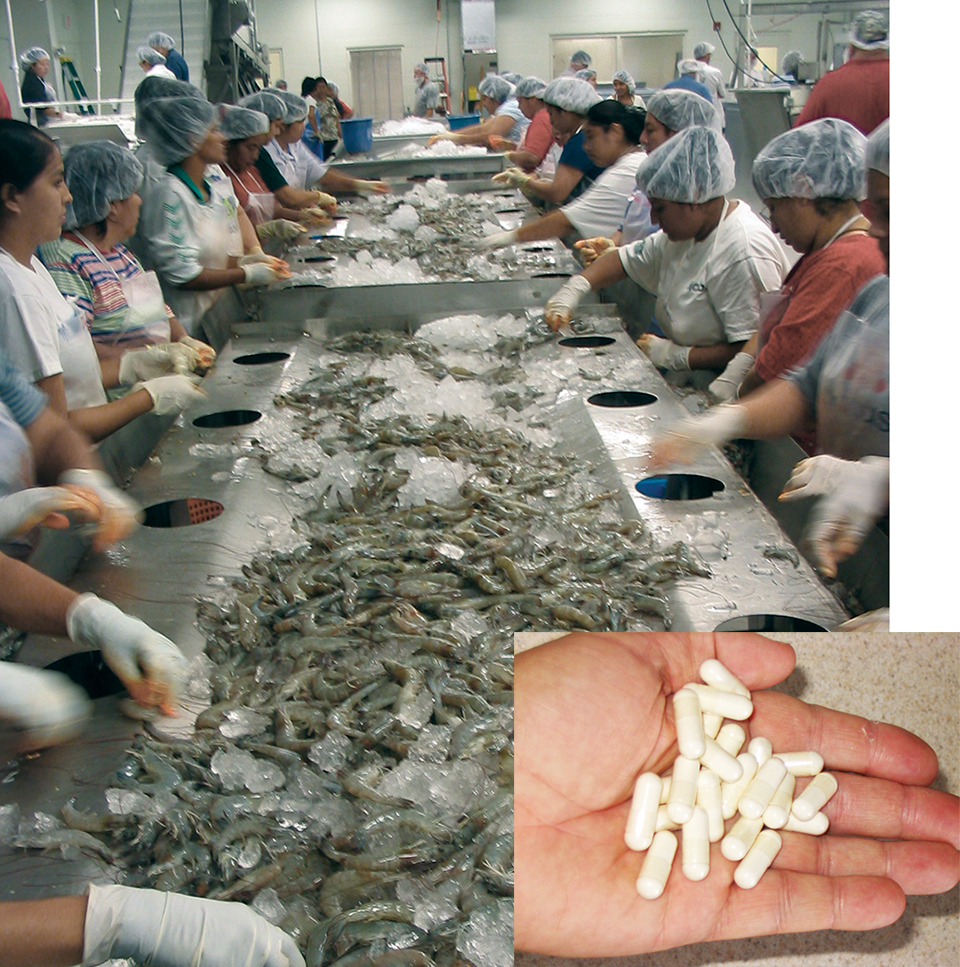
Intelligence
Shrimp processing byproducts find many uses
Shrimp processing byproducts are constructively used in shrimp or fish feeds, livestock feeds and plant fertilizer. Chitin from shrimp exoskeletons is used in bandages and varied cosmetic products.

Aquafeeds
GOAL 2021: With animal feeds under scrutiny, aquaculture can make a strong claim
The true cost of aquafeed and feed ingredients goes beyond dollars, said presenters during GSA’s virtual GOAL session on animal feed production.



